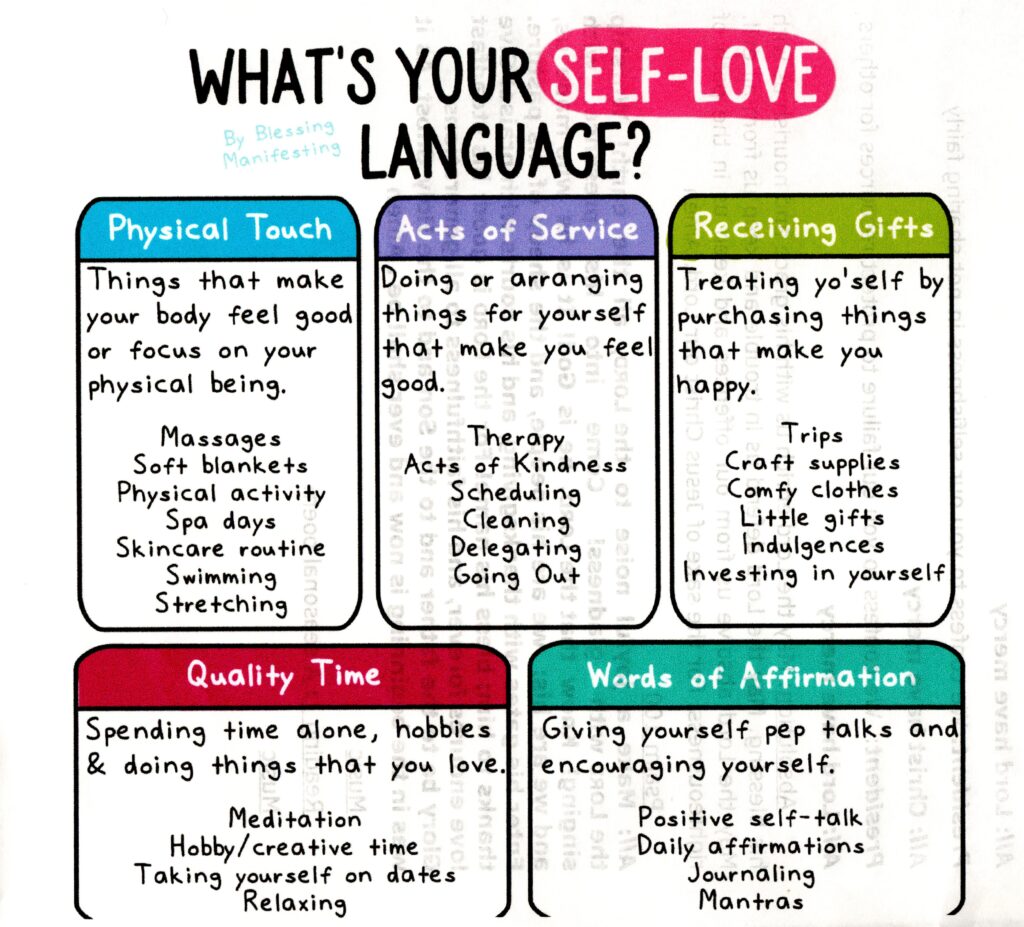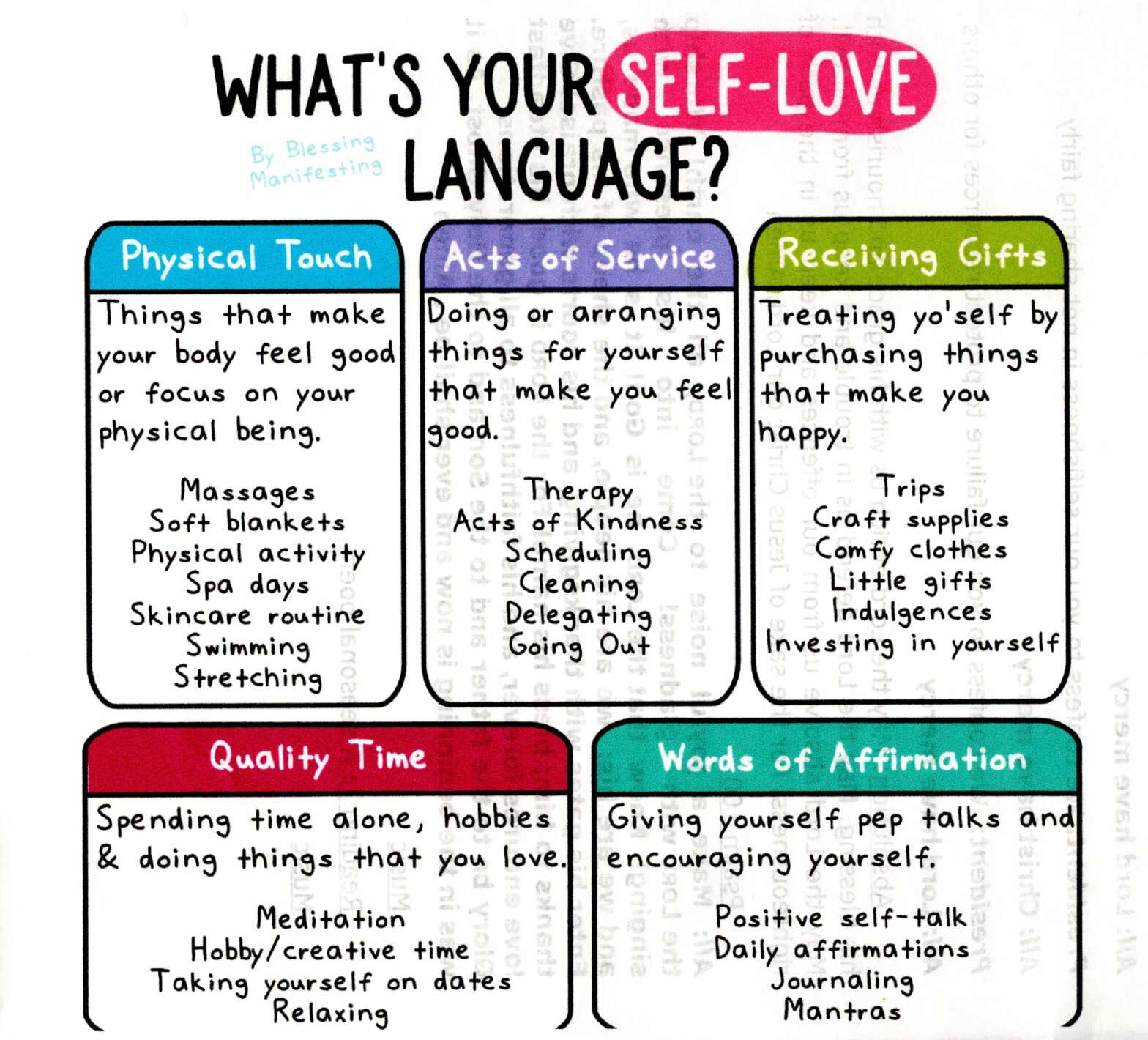Love Language is a topic you could write a book about: fortunately, Dr Gary Chapman has already done it! He has many detractors, including Kate Lister. She wrote an insightful critique of the Five Love Languages in the i newspaper on Wednesday, 5th December 2023. She questions the research evidence underlying this model. This is a sound question although it raises the question: what IS evidence?
Her material highlight the hidden rules that often dominate any writer’s material. I’d ask you to keep a careful eye out for that. My own point of view is that any model offered by another person, including me, is only as good as you are able to use it for yourself. Anything that helps you find that something-just-that-little-bit-different is a good thing; if you swallow anything wholesale it is not likely to help in the longer run. It simply adds to the lies we tell ourselves.
Let talk, now, about small, safe experiments relating to love, self-love, attachment and love languages.
What I like about the ‘love language’ perspective is that it takes a tricky emotion, love, and offers you some very specific ways to design safe experiments relating to it. Some demonstrate love of yourself, before you consider what you might do to foster a loving relationship with another person.
Let’s take the header picture apart, and see some small, safe experiments that might emerge.
The chart, above, offers five areas in which you can design an experiment:
Physical Touch
As I imply on the page relating to sex, there is more to physical touch than the sex act. You can attend to things that makes your body feel good. That’s as helpful as exploring things you can do to make another person feel good (both are important!). Also, it challenges us to develop our own skills in asking for things.
Acts of Service
Again, these acts of service can be for yourself, as much as for other people. It helps to know who we are doing things for, long before we wonder about ‘why’ we are doing them. Acts of service are so very evidently small, safe experiments. Many experiments described on this website should fit the bill. That said, it begs the question: what are the limits on actions?
Receiving Gifts
I’m not so sure about this category of love language. It should be harmless in theory, but we’ve all seen how gifting can be a form of ‘compensation’, even a cover job for our guilt. The illustration, above, talks of ‘investing’ in yourself and I’d prefer to view this as being open to missed opportunities – using the view of Dan Newby. Here, he warns us about unopened gifts; ones we take for granted.
Can you develop safe experiments so you open the gift box a little more – and miss opportunities less often? After that, we might do a similar thing with others in our lives.
Quality Time
On this website, I have included Special Time as a very specific safe experiment. It’s an experiment that assumes we are informed about how we structure our own time.
The illustration, above, adds other dimensions – and, importantly, it includes quality time on our own, not just with others. This page be relevant; finding quality time assumes we know where we are in our own changing time-line. It is easier to do some things at different times, and not so easy at other times.
In words popularised by the US group, The Byrds, there is much time available to us – but, for what?
… a time to be born and a time to die,
Ecclesiastes (edited)
a time to plant and a time to uproot,
… a time to weep and a time to laugh,
…a time to search and a time to give up,
… a time to be silent and a time to speak,
Words of affirmation
I’ve a page of safe experiments using affirmation. Although I do not keep a journal, I have touched on the value of writing things down so you can build the results of one safe experiment, on to another.
Affirmations will not usually change beliefs overnight and it is still possible to find new meanings through repetition and re-shaping our habits.
Here is the illustration, for a reminder:

There is another perspective brought to my attention in February 2023.
Diane Poole Heller pointed out a number of safe experiments available in relation to loving and secure relationships. She said security was built through showing ‘presence’, that is, mindful and intentional listening to the experiences of others. Diane says presence, along with attunement, are two of the most effective and important secure attachment skills. The safe experiment of being present and attending is relevant along with all the communications skills needed to make ‘Special Time’ work.
Attunement is a different term not addressed in this website thus far. It involves understanding someone deeply through listening and showing empathy. When we are small …..
we are reliant on our caregivers for our survival. If a parent or caregiver is attentive to our needs and responds consistently and appropriately, we understand that our environment is generally safe and that we matter and are valued.
email from Diane
If we do not receive consistent emotional support and attention as children, we may experience attachment-based trauma.
Diane offers some safe experiments, as follows:
Practising Presence & Attunement
There is another dimension to making sense of ‘love’: much of what is said here relates to adults and ways to respond in intimate, adult relationships. Even so, there are many versions of ‘love’ (see the Greek view on this – at the bottom of the page!).
Then there is the love that develops between infants and their caretakers. It’s a love that takes us to the very heart of attachment, bonding and imprinting. I’ve written about these processes a good few times; for example, see:
Attachment styles: where different ways of loving (or not loving, even rejecting) can makes an impact on our whole lives, if we let it.
Attachment trauma: where failure of loving adds to trauma. This places one hand behind our back as we move into adulthood and being parents or carers in our own right.
Inter-generational trauma: where the ‘hot potato’ of love and resistance of love is passed down over several generations.
I am not going to offer any safe experiments to cover these wide-ranging topics. This would not do credit to myself, or the topic in hand. You can, however, thread your way through this website and do your own further research.
One aim would be to translate all that information into the patterns of ‘loving’ that exists, or not, within your own world.
You could begin this wider search at: https://www.psychologytoday.com/intl/egtw/click-here-happiness/202009/what-are-the-5-love-languages-definition-and-examples
…. in order to extend your skills in the art of relating to others.
Further leads to consider
how do you design a safe experiment?
What can make up a safe experiment?
